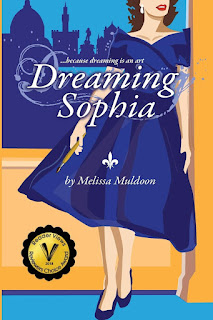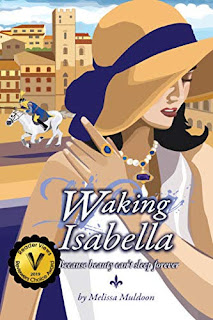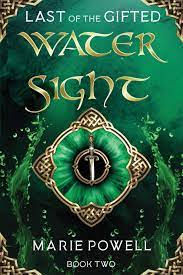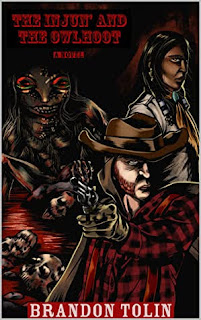Weekly Reader: The Ping Pong Champion of Chinatown by James Hanna; Goofy, Dizzy, Silly Narrator Is The Highlight of This Humorous Crime Anthology
By Julie Sara Porter
Bookworm Reviews
Spoilers: There are times when a first person narrator is so gloriously well written that the Reader can forgive any plot holes that occur and can forgive some of the ridiculous situations in the book. The narrator actually makes the book. Gertie McDowell, protagonist of James Hanna's The Ping Pong Champion of Chinatown, is that type of narrator.
Gertie's narration is the highlight of the book. A small town girl from Kentucky, Gertie blathers on about her small town of Turkey Roost ("a whole lot of nothing"), how her life is so boring that she watches old movies on Turner Movie Classics (Her favorite is West Side Story. "That Natalie Wood sure can sing" blissfully oblivious to the fact that Wood's singing was dubbed.), and how she achieved high school stardom playing the lead in Annie ("Everyone in the school auditorium, all fifty people, were on their feet pounding their palms when I took the curtain call.").
Gertie is incredibly dizzy and naive and this naivety pulls her into situations throughout the book that in other hands would be suspenseful or traumatizing but in Hanna's hands become outlandish and farcical because of how Gertie views them.
After starring in Annie, Gertie heads to Los Angeles to try her luck in Hollywood. When the studios don't exactly come calling, Gertie is filmed by a character called The Nose. His intentions are honorable, he insists, though he is so obviously weasley that his business card might as well read "The Nose: Hollywood Hustler, Liar, and Sleaze at your service."
Not surprising to the Reader, but certainly shocking to Gertie, she ends up starring in a series of fetish videos. Her foot fetish videos garnered several hits and subscribers who are into that sort of thing. It also leads to a certain infamy as she is nominated for the Shiniest Arches Award and is offered the lead role in One Bride for Seven Brothers. Even not quite bright Gertie has enough foresight to turn it down thinking that it "wouldn't play well in Turkey Roost." She turns down her adult entertainment career and returns to Turkey Roost.
That is the pattern throughout the book: Gertie has an idea to improve her situation in some way. She gets entangled in an illegal or unusual activity, either by someone conning her or through her own foolishness. She thinks she finds a measure of success. Something happens that makes things worse or unbelievable and she ends up in a worse situation than before, usually either broke and back in Turkey Roost or in prison.
For example, she becomes a dress designer and is conned by Jean Valjean, a client who uses her dresses as a front for drug dealing. She ends up going to prison for that, the prison that Martha Stewart went to, she reminds us endlessly.
Gertie is released from prison and ends up in the Witness Protection Program after encountering another drug dealer named Sancho Panza. Hanna has fun with these literary references and how they sound perfectly normal to Gertie.
She hides out in San Francisco and becomes a local ping pong champion. Unfortunately, her victory is one sided as the San Francisco Chronicle neglects to mention her victory. Oh well, she reasons, she got a plaque and the area of Chinatown in which she lives recognizes her victory.
She gets recruited into a human trafficking ring by a former acquaintance from her prison days, only to be rescued from that situation by her old friend, The Nose. She also appears on a parade float and her Witness Protection Program cover is blown when she is recognized by her foot fetish fans. This is a big problem.
See the Witness Protection Program only works when you are not actively trying to put yourself in dangerous situations or seek publicity. Since Gertie does both, naturally her life is in danger and she is rescued by the hunky Agent Jackson. That's how she refers to him throughout the book, Agent Jackson, even after they become closer. No first name, but then again Gertie probably thinks that "Agent" is his first name.
The situations that Hanna describes: drug dealing, human trafficking, unhappy marriages, poverty, imprisonment, sexual harassment etc would be mostly dramatic. For a character to encounter even one of them would result in a change and make them more worldly, self aware, or cynical. Not Gertie.
She remains the same lovable kooky ditz throughout. The results make her a bit one dimensional and flat as a character. But as a narrator, it makes her a unique voice.
Gertie retains a humorous even hopeful outlook throughout the book. She always hopes for something better and always sees a bright side in every dark situation. This puts her at a distance from the Reader where they can see the reality of the situation but she can't. However, because the situation isn't as bleak to her as it is to her Reader, Gertie can see a possible future and a potential way out of the trouble in which she finds herself.
Gertie McDowell is naive, dizzy, and incredibly likeable. She even breaks the fourth wall to inform her author that she would rather sit down with a cool glass of lemonade and watch the tumbleweeds grow than accompany Hanna on a thirty states tour. She is someone who may be dumb, but knows enough to find victory in her own way.










